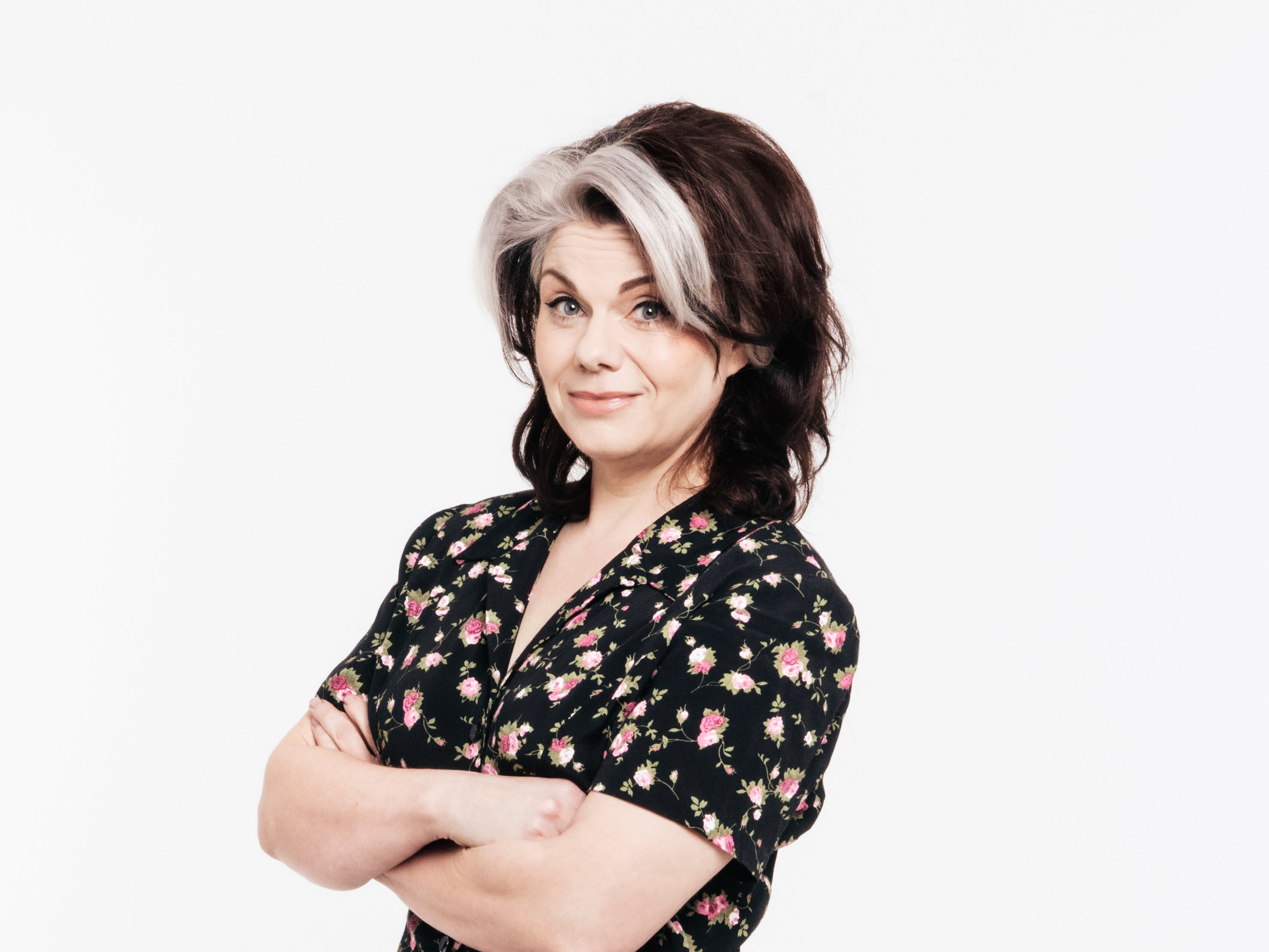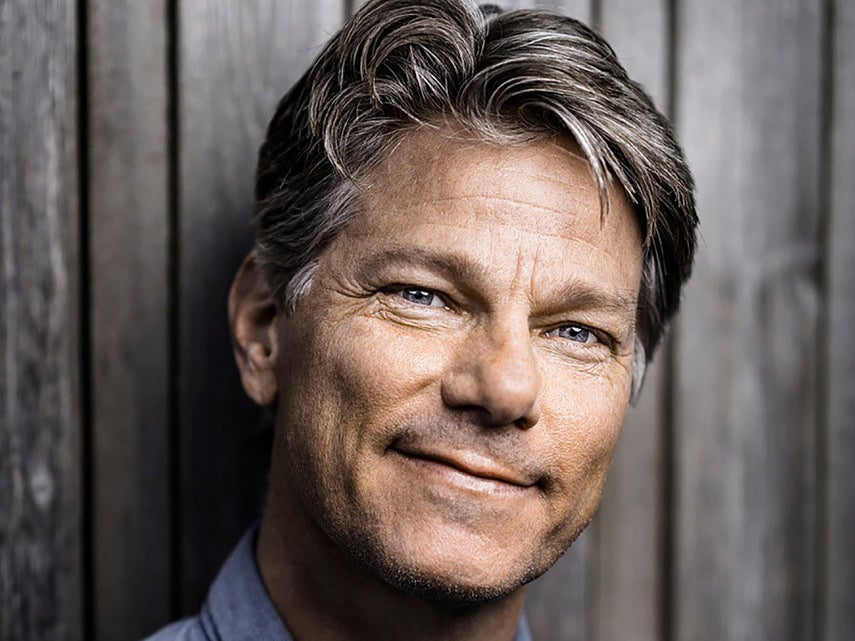When it comes to being whisked away into a whole other world, nothing quite beats a book. Unlike a TV drama or a big new cinema release, words on a page encourage you to conjure whole universes inside your mind – textures, smells, landscapes, emotions, adventures.
Whether fiction or non-fiction, books can make us feel seen. They can help us escape. They can serve as a guide. A lot of the time, they can even shape our lives.
EM Forster put it beautifully when he said, “What is wonderful about great literature is that it transforms the man who reads it towards the condition of the man who wrote.”
We spoke to some of the stars of the literary world, appearing at this year’s Hay Festival, about the books that made them who they are today…
Anne Enright – Through the Looking Glass, and What Alice Found There, by Lewis Carroll
“When I was a child, the book I adored, the one that intrigued, delighted and held me was not Alice’s Adventures in Wonderland but the lesser classic, Through the Looking Glass, and What Alice Found There. The first volume may be theatrical but, at the age of six, the second felt more philosophically satisfying (jam tomorrow) and properly interested in ambition (‘Well, this is grand!’ said Alice. ‘I never expected I should be a queen so soon’). I found the watery transitions wonderful in both (tears, rowing boats), but I think the knitting sheep mattered more to me than the Dormouse and I found the Red Queen was more alarming than the Mad Hatter. Also, the epic Jabberwocky soars above the best verse that Wonderland can provide – I am speaking, of course, of the minimalist, failed haiku, Twinkle Twinkle Little Bat.”
Enright’s novel ‘The Wren, The Wren’ is out now

Rory Stewart – Tristram Shandy, by Laurence Sterne
“Tristram Shandy is my most comforting, wise, and provocative companion. It is an essay on ignorance decorated with the most splendid erudition. A story of a country enjoying dignified absurdity. A backward portrait of the good life. And in the modesty, simplicity and goodness of Uncle Toby – his childish play, childish intense seriousness, his utter lack of intellectualism and his courage – a vision of a saint. All packaged in the most enticing, impossible, infuriating, excessive and hilarious prose. In Tristram Shandy the most irresponsible, uncensored, reckless art carries aesthetic and moral insights of intense profundity.”
Stewart’s book ‘Politics on the Edge’ is out now

Judy Murray – Tennis Handbook, by Nick Bollettieri
“When I started out in coaching in the late 1980s, there was nobody to learn from in Scotland. Tennis was a minority sport, played only in the summer months, so nobody aspired to be a world-class player or a world-class coach. There was no track record of any success, no infrastructure, very few coaches and no indoor courts. And the internet didn’t exist in those days. So I bought Nick Bollettieri’s Tennis Handbook. Nick was the first person to build a tennis academy. He bought a tomato patch in Florida and converted it to a tennis facility for emerging players to train together. It opened in 1978 and he produced a conveyor belt of champions over many years. His handbook was gold dust to me.”
Murray’s novel ‘The Wild Card’ is out on 8 June

Caitlin Moran – Anne of Green Gables, by Lucy Maud Montgomery
“I can remember wanting to be a writer from a very young age – perhaps six – but fretting that books had to be about saving the world, or aliens, or wars, or… diseased rabbits hallucinating some kind of rabbit god. Watership Down was very big at the time. But when I read Anne of Green Gables, along with Little Women, it showed me that longing for a puffed-sleeve dress, or being obsessed with a friend, or getting very excited about the cherry blossom – ‘The White Way of Delight’ – were just as interesting to a reader as some robot getting its head blown off. If you love a character, their peril and stakes can be as small as ‘dyeing your hair green’, and you’ll feel it just as much as you feel Scarlett O’Hara despairing over the burning of Atlanta, or Katniss being terrified into saving the world. In fact, if I’m being honest, I think writers cheat when they make their stakes so huge, and dramatic. It’s kind of cheating. Do the harder thing! String your story together out of tiny things! Being ginger in 1890 is a true peril. It still is now. Ask my sisters.”
Moran’s book ‘What About Men?’ is out now

Hollie McNish – Sky in the Pie, by Roger McGough
“Like most people, there are probably a few or hundreds that ‘made me’, but the first book that burst open my brain and imagination was a tiny book, literally a miniature book, which is also why I loved it, with the poem Sky in the Pie, by Roger McGough, written inside. I read this poem over and over again and realised that the world of words and poetry and stories could make absolutely anything possible, including eating the entire universe on a plate; my eight-year-old mind was blown. And it made me laugh a lot, which is still my favourite hobby.”
McNish’s collection ‘Lobster: And Other Things I’m Learning to Love’ is out now

Adam Kay – The Phantom Tollbooth, by Norton Juster
“What if I told you the funniest, cleverest children’s book ever written was also an ode to education? A pun-crammed journey through a world built on wordplay, dedicated to the joy and adventure of maths and reading. And only about one in 10 people I mention it to have heard of it. Well, now you have too. The Phantom Tollbooth by Norton Juster follows Milo and Tock the Watchdog as they trek through the kingdoms of Dictionopolis and Digitopolis, meeting a wonderland of characters including a spelling bee, the world’s shortest giant and the 0.58 of a child from the average American family of 2.58 children. Mixing education and humour is everything I aim for as a kids’ author, and The Phantom Tollbooth is the gold standard, unmatched since 1961.”
‘Kay’s Incredible Inventions’ by Kay, illustrated by Henry Paker, is published on 23 May

Kaliane Bradley – Frost in May, by Antonia White
“I first read Frost in May by Antonia White as a teenager, and have reread it over and again as an adult. Set in a Catholic convent school in Edwardian Britain, it follows recent convert Nanda, who enters the Convent of the Five Wounds school at the age of nine and is brutally expelled aged 15. It’s a vivid depiction of a youthful experience of passion – for religion, or at least a child’s understanding of religion; for friends (and what I’d now call a romantic relationship between two girls, Nanda and her best friend Léonie); and for the creative process. Nanda obsesses over her experience of art, of engaging with it (how do you engage with art in the right way?) and nervously, newly trying to make it (how do you make art in the right way?). Her questions result in a painful exploration of the horror that restriction, authority and propriety can wreak on a curious soul. This is not, admittedly, a cheerful subject, but the novel is semi-autobiographical – so White did succeed in finding her voice despite everything.”
Bradley’s ‘The Ministry of Time’ is out on 16 May

John Vaillaint – Tree in the Trail, by Holling Clancy Holling
“Holling was an American writer and illustrator active in the mid-20th century who wrote a number of children’s books, most famously Paddle-To-The-Sea (1941). All of Holling’s stories centre on a non-human character (a tree, a turtle, a wooden carving of a man in a canoe), around which biology, history and human activities swirl, across geography and time. I was captivated by these books – as a young child by the vivid colour illustrations; as a young reader by the sweeping stories and, when I was a bit older – 10 or 12, by the marginalia he would include, illustrating more technical aspects of what was going on on that particular page. This three-tiered approach is, more or less, my model for non-fiction writing.”
‘Fire Weather: A True Story from a Hotter World’ by Vaillaint is out now

Anthony Horowitz – Adventures in the Screen Trade, by William Goldman
“Goldman was one of Hollywood’s greatest screenwriters: his films include Butch Cassidy and the Sundance Kid, Marathon Man and The Princess Bride. Although it came out 40 years ago, this very personal, sometimes sceptical but always informed account of his three decades in show business is still the bible for anyone who wants to write for film and TV. It was Goldman who came up with the three words that have always hung above my desk: NOBODY KNOWS ANYTHING. It’s so true. Nobody can tell you if your script is an Oscar winner or a turkey until it’s been made and released. You can only live in hope.”
‘Close to Death’, by Horowitz, is out now

Lisa Jewell – High Fidelity, by Nick Hornby
“In 1995, when High Fidelity by Nick Hornby was first published, I had just left a marriage to a very serious man who had guided me towards some pretty heavyweight reading for five years. After years of battling my way through my ex’s bookshelves, it was giddying to pick up High Fidelity and find myself in a world that was so fresh, recognisable and relatable. I immediately wanted to write a book just like it, and a few weeks later I started writing my first novel, Ralph’s Party, which was published in 1999 and which changed the course of my life for ever.”
‘None of This is True’ by Jewell is out now

Blindboy – The Third Policeman, by Flann O’Brien
“I read The Third Policeman as a teenager and it made writing seem like something I could at least try. The book revealed to me how Hiberno English and a very specific strain of surreal Irish humour could exist as literature. Novels were scary, serious things when I was a teenager who hated school, but The Third Policeman changed all that for me. It gave me permission to find my own voice.”
Blindboy’s ‘Topographia Hibernica’ is available now


